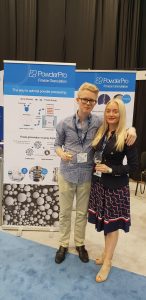Ultrasonic spray-freeze drying of partially purified microbial transglutaminase
Hilal Isleroglu, Izzet Turker, Mehmet Tokatli, Banu Koc
Abstract
Ultrasonic spray-freeze drying (USFD) was evaluated to produce partially purified microbial transglutaminase (mTGase) powder, and the effects of the process conditions (a nozzle frequency of 48–120 kHz and a flow rate of 2–8 ml/min) on enzyme activity and particle size were determined. Furthermore, the relative activity changes at each step of USFD and the behavior of the dried enzyme at extreme pH levels, high temperature and presence of the metal ions were investigated. Additionally, the final product produced by USFD and the powder produced by conventional freeze drying (CFD) were compared in terms of relative activities and physical properties. The results showed that atomizing conditions affected the particle size and, hence the enzyme activity. The enzyme activity was enhanced by ultrasonic atomizing at all conditions while most of the activity loss occurred in the drying step. The USFD provided higher enzyme activity, smaller particle size, better particle morphology and better reconstitution properties than CFD, which are explained by the ultrasonic atomizing and accelerated freezing steps of USFD. Also, the USFD sample preserved its stability in tough conditions, such as extreme pH levels, high temperature and the presence of metal ions better than the CFD counterpart.
Keywords
Spray-freeze drying, Ultrasonic atomization, Transglutaminase, Relative activity, Particle size







